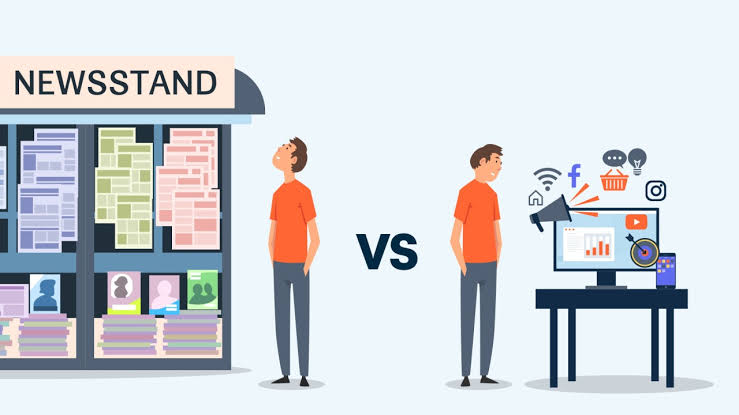Traditional Marketing vs. Digital Marketing: Which One Is Better

In a rapidly evolving marketing landscape, businesses face a crucial decision: whether to invest in traditional marketing or embrace the digital realm. Both approaches have their unique advantages and disadvantages. This article will explore the differences and merits of traditional and digital marketing to help you make an informed choice for your marketing strategies.
Understanding the Marketing Landscape
The marketing landscape has undergone a profound transformation in recent years. Traditional marketing and digital marketing represent two distinct approaches, each with its own set of tools, techniques, and results. Let’s delve into the comparison.
Traditional Marketing
The Age-Old Approach
Traditional marketing encompasses the conventional methods that have been tried and tested for decades. These include:
1. Print Media
- Newspaper and magazine advertisements
- Brochures, flyers, and posters
2. Broadcast Media
- Television and radio commercials
- Billboards and outdoor advertising
3. Direct Mail
- Postal campaigns, catalogs, and postcards
4. In-Person Marketing
- Trade shows, events, and face-to-face sales
Strengths of Traditional Marketing
Reaching a Wider Demographic: Traditional marketing often has broader audience reach, especially through mass media channels.
Tangible and Credible: Printed materials and physical advertisements can be more credible to some consumers.
Brand Visibility: Billboards and posters can enhance brand visibility.
Challenges of Traditional Marketing
High Costs: Traditional marketing methods are often more expensive than their digital counterparts.
Limited Interaction: Interaction with the audience is limited, making it challenging to gather immediate feedback.
Harder to Measure: Measuring the effectiveness of traditional marketing can be challenging.
Digital Marketing
The Era of Online Marketing
Digital marketing leverages the internet and various online platforms to connect with the target audience. This includes:
1. Social Media Marketing
- Utilizing platforms like Facebook, Twitter, and Instagram for promotion.
2. Content Marketing
- Creating valuable and relevant content to attract and engage potential customers.
3. Search Engine Optimization (SEO)
- Enhancing online visibility through search engines like Google.
4. Email Marketing
- Sending targeted emails to subscribers.
Strengths of Digital Marketing
Cost-Efficient: Digital marketing is often more cost-effective than traditional methods.
Precise Targeting: Allows for precise audience targeting based on demographics, interests, and behavior.
Real-Time Analytics: Provides immediate access to data and performance metrics.
Challenges of Digital Marketing
Saturation: The digital space is highly competitive, making it challenging to stand out.
Constant Evolution: The digital landscape evolves rapidly, requiring constant adaptation.
Privacy Concerns: Digital marketing must address privacy concerns and data protection.
Which One Is Better?
Comparing the Two Worlds
Selecting the better approach between traditional and digital marketing depends on various factors:
1. Audience and Demographics
- Understanding your target audience is vital. Younger generations tend to favor digital channels, while older demographics may respond better to traditional methods.
2. Budget Constraints
- Consider your budget. Traditional marketing can be costly, but digital marketing offers cost-effective alternatives.
3. Measurability
- Digital marketing provides real-time analytics, enabling precise measurement of campaigns. Traditional marketing often lacks this immediacy.
4. Brand Identity
- Your brand’s identity and values should align with the chosen marketing approach. Traditional marketing can convey trust and reliability, while digital marketing showcases innovation.
5. Engagement and Interaction
- Digital marketing excels in engagement and interaction with the audience, while traditional marketing is more one-sided.
Conclusion
Selecting the Right Mix
The choice between traditional and digital marketing isn’t binary. In many cases, a combination of both can yield the best results. Understanding your audience, objectives, and budget will guide your marketing strategy.
FAQs
1. Is traditional marketing still relevant in the digital age?
- Yes, traditional marketing still holds relevance, especially for reaching certain demographics and creating a tangible brand presence.
2. Can digital marketing work for small businesses with limited budgets?
- Yes, digital marketing offers cost-effective options for businesses of all sizes, making it accessible for small businesses.
3. How can I measure the success of a digital marketing campaign?
- Success can be measured through metrics like website traffic, conversion rates, social media engagement, and return on investment (ROI).
4. What are the key considerations when choosing between traditional and digital marketing?
- Consider your target audience, budget, objectives, and brand identity when making the choice.
5. Is it possible to integrate traditional and digital marketing strategies?
- Yes, integrating both can be a powerful approach. Some companies use traditional marketing to drive consumers to their digital platforms for further engagement.
In today’s marketing landscape, the debate between traditional and digital marketing continues. The choice ultimately hinges on your specific goals, audience, and resources. By understanding the strengths and challenges of both approaches, you can create a marketing strategy that aligns with your unique requirements and sets you on the path to success.






